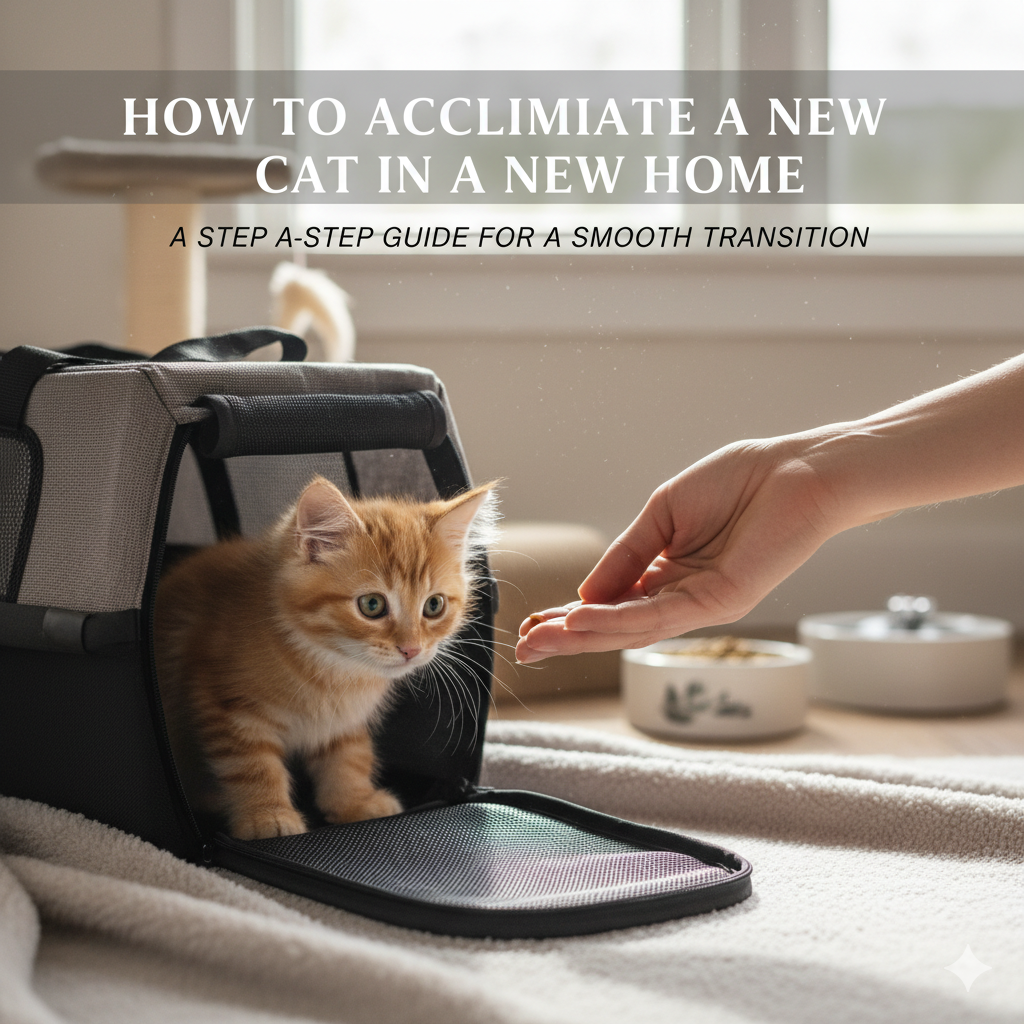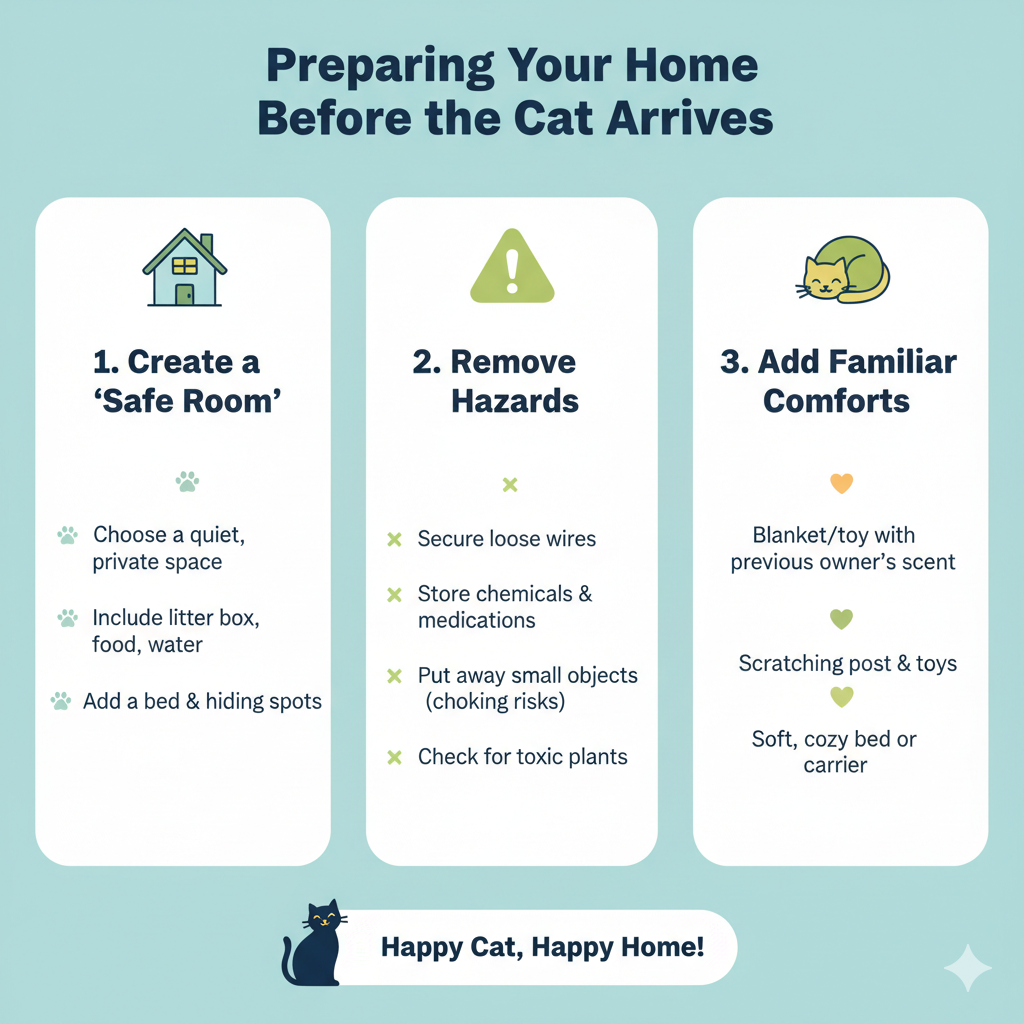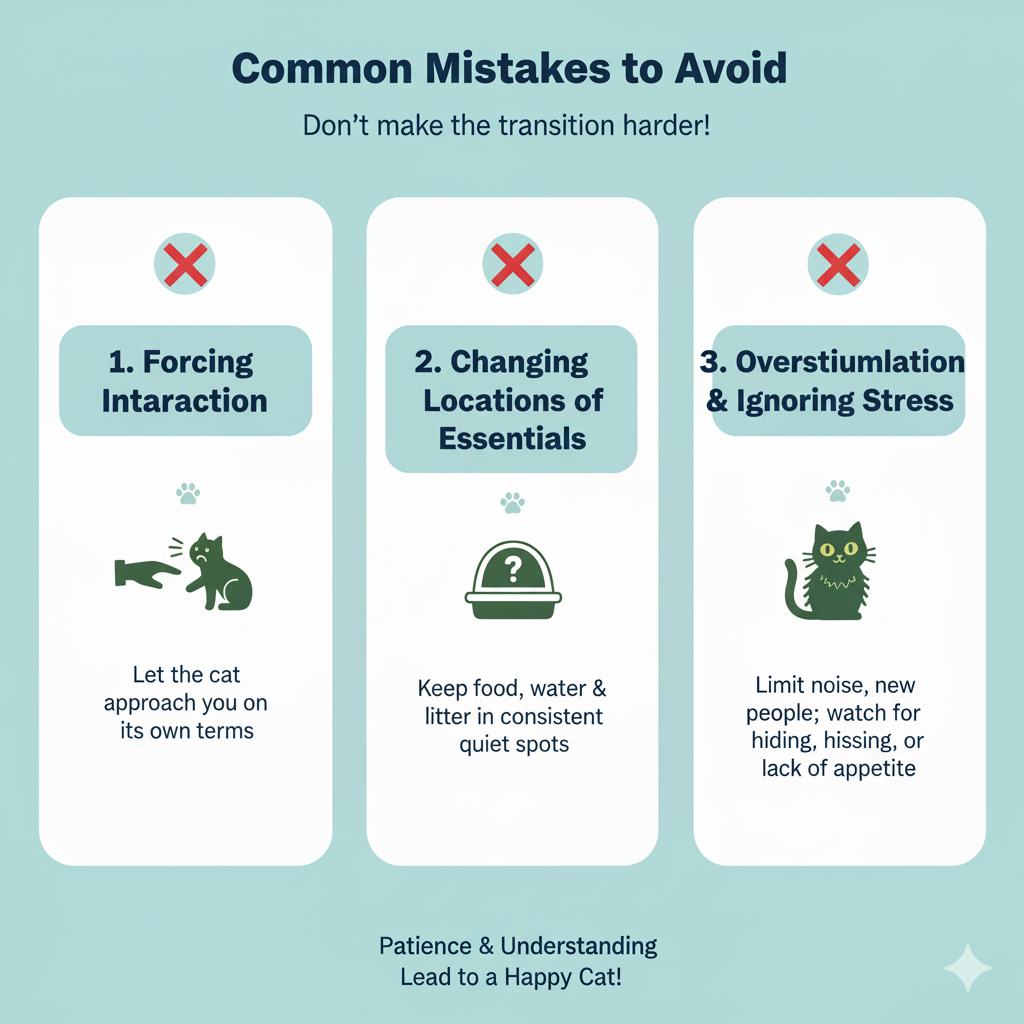Post Disclaimer
Catopedea shares information for educational and general interest purposes only. Our content is not a substitute for professional veterinary advice, diagnosis, or treatment. Always consult a licensed veterinarian for concerns about your cat’s health, diet, or behavior.
Bringing a new cat home is one of life’s most rewarding experiences. Whether you’ve adopted a playful kitten or given a rescue cat a second chance, you’ll likely find yourself wondering: how do I help my cat feel safe and comfortable in a new environment?
The truth is, cats are sensitive, territorial creatures. Change whether it’s a new home, new people, or new pets can make them nervous. The good news? With patience, preparation, and gentle guidance, you can help your cat adjust smoothly.
In this guide, we’ll walk you through everything you need to know about how to acclimate a new cat from preparing your home to building trust and avoiding common mistakes.

Why Cats Need Time to Adjust
Cats thrive on routine and familiarity. A new home means new smells, new sounds, and new people all of which can feel overwhelming.
When a cat is introduced to unfamiliar surroundings, you may notice:
- Hiding under beds, couches, or in corners.
- Reduced appetite in the first day or two.
- Cautious exploring or staying close to safe spaces.
- Stress signals like hissing, growling, or flattened ears.
According to the American Society for the Prevention of Cruelty to Animals (ASPCA), these behaviors are a normal part of a cat’s adjustment period and usually resolve once they feel safe.
Preparing Your Home Before the New Cat Arrives

The acclimation process begins before your cat even sets paw inside the door. A little preparation goes a long way in making the transition smoother.
1. Create a “Safe Room”
Designate a quiet, secure room as your cat’s first territory. This could be a spare bedroom or even a bathroom. Set it up with essentials:
- Litter box
- Food and water bowls
- Soft bedding
- Scratching post
- A few toys
The Humane Society recommends starting small, since confined spaces help cats feel more secure.
2. Remove Hazards
Check the area for common dangers:
- Toxic plants (see ASPCA’s toxic plant list)
- Dangling cords or wires
- Small items that could be swallowed
- Open windows or vents
3. Add Familiar Comforts
If possible, bring along a blanket, toy, or carrier lining with familiar scents. Familiar smells help reduce stress, according to PetMD.
The First Few Days: Building Safety and Trust
When you bring your cat home, resist the urge to let them roam free immediately. Instead, follow these steps:
- Let them explore the safe room. Place the carrier inside and open the door. Allow the cat to step out at their own pace.
- Keep noise low. Avoid loud TVs, music, or too many people in the room.
- Offer food and water nearby. Sometimes cats won’t eat the first day; don’t panic. Appetite usually returns once they relax.
- Sit quietly. Spend time in the room without forcing interaction. Let your cat observe you from a distance.
- Use treats as trust builders. Place treats closer and closer to you each day until the cat feels safe approaching.
The American Veterinary Medical Association (AVMA) stresses the importance of avoiding forced interactions during this stage.
Gradual Exploration of the Home
After your cat seems comfortable in the safe room using the litter box, eating regularly, and showing curiosity you can slowly introduce them to more of your home.
- Open doors one room at a time. Let them explore at their own pace.
- Keep essentials consistent. Don’t move the litter box or food bowls suddenly.
- Maintain routine. Feed at the same times daily to build predictability.
- Monitor stress signals. If your cat retreats to hiding, let them. They’ll emerge when ready.
Tip: Don’t overwhelm your cat with access to the entire house too soon. Slow and steady always works best. The Cornell Feline Health Center notes that gradual introductions reduce long-term anxiety.
Building Bond and Comfort
As your cat gains confidence, it’s time to deepen your bond. Here are simple, positive ways to make them feel at home:
- Interactive play. Use toys like feather wands or laser pointers to engage your cat in fun activities.
- Respect personal space. Let your cat initiate contact instead of chasing them for affection.
- Gentle petting. Start with areas most cats enjoy: under the chin, behind the ears, and along the back.
- Positive reinforcement. Reward calm, curious behavior with treats and soft praise.
Bonding takes time. Some cats may cuddle within days, while others may take weeks. Both are perfectly normal. For more bonding tips, see International Cat Care.
Introducing Cats to Other Pets
If you already have pets, introductions should be gradual to prevent stress or conflict.
- Scent swapping. Rub a cloth on one pet and place it near the other to get them used to each other’s smell.
- Closed-door meetings. Let them sniff each other under the door.
- Visual introduction. Use a baby gate or slightly open door to allow sight without full access.
- Supervised interaction. Gradually increase shared time, always watching for signs of aggression.
Never force direct contact too early. Rushed introductions can create long-term tension.
Signs Your Cat Is Settling In
How do you know when your cat feels at home? Look for these encouraging behaviors:
- Exploring confidently without hiding.
- Playing with toys or interacting with you.
- Eating and drinking normally.
- Using the litter box consistently.
- Sitting near you, purring, or kneading.
Each milestone is a sign that your cat feels safer and more secure.
Common Mistakes to Avoid

Many new cat owners accidentally make the transition harder by rushing the process. Here’s what to avoid:
- Forcing interaction. Picking up or petting before the cat is ready.
- Changing locations of essentials. Moving food or litter box can confuse them.
- Overstimulation. Allowing too many visitors or children to overwhelm the cat.
- Ignoring stress signs. Hissing, growling, or hiding are cues that your cat needs space.
By avoiding these mistakes, you’ll help your cat build confidence faster.
How Long Does It Take to Acclimate a New Cat?
There’s no one-size-fits-all answer. Some cats adjust in just a few days, while others may need weeks or even months. Factors that influence adjustment time include:
- Age (kittens often adapt faster than older cats).
- Personality (shy cats need more patience).
- Past experiences (rescue cats may take longer if they’ve had trauma).
The key is patience and consistency. Don’t compare your cat to others celebrate progress at their pace.
FAQs About Acclimating a New Cat
Q: Should I keep my new cat in one room at first?
Yes. A safe room helps them feel secure before exploring bigger spaces.
Q: How can I help a scared cat feel safe?
Stay calm, provide hiding spots, avoid forcing interaction, and use treats to encourage trust.
Q: What if my cat won’t eat the first day?
It’s normal for cats to skip meals when stressed. Offer fresh food, keep the environment quiet, and appetite should return within 24–48 hours.
Q: How do I know when to expand their space?
When your cat uses the litter box consistently, eats normally, and shows curiosity about what’s beyond the safe room, they’re ready to explore more areas.
Conclusion: Patience Builds Lifelong Trust
Learning how to acclimate a new cat isn’t about rushing it’s about creating an environment where your cat feels safe, loved, and free to explore at their own pace. With a quiet space, steady routine, gentle interaction, and lots of patience, your cat will soon see your home as their own.
Every cat has a unique adjustment timeline. Some may be ready in days, while others take weeks. No matter the pace, the result is worth it: a confident, happy companion who trusts you deeply.
👉 If you’re curious about how long it takes cats to adjust to a new owner, check out our detailed guide here for more insights.


